What Happens After Shock Loss After Hair Transplantation?
Undergoing a hair transplant can be a life-changing decision for many individuals who struggle with hair loss. However, one of the most common concerns after the procedure is a phenomenon called shock loss. While shock loss can be unsettling, it’s important to understand that it is a normal part of the hair restoration process and typically temporary.
In this article, we’ll explain what shock loss is, why it occurs, when to expect it, and how to manage it during the recovery phase after a hair transplant.
What is Shock Loss After Hair Transplantation?
Shock loss refers to the temporary shedding of both transplanted and natural hair after a hair transplant. This phenomenon occurs in the weeks or months following the procedure, and it can happen for several reasons.
- Shedding of Transplanted Hair: In the initial stages after the transplant, the transplanted hair follicles may shed as part of the hair growth cycle. This shedding is not permanent, as the hair follicles will go into a resting phase before new hair begins to grow.
- Shedding of Existing Hair: Sometimes, hair that was already in place in the recipient area may also shed after the procedure. This is referred to as temporary shock loss and is often caused by the trauma to the scalp during the hair transplant process.
Although shock loss can be alarming, it’s essential to understand that it is part of the natural process of hair follicle adaptation to their new environment.
Why Does Shock Loss Occur?
Shock loss happens for several reasons related to the trauma and stress that the scalp undergoes during a hair transplant procedure:
- Trauma to the Scalp
During the transplant, hair follicles are extracted from the donor area and implanted into the recipient area. The surgical procedure, which involves tiny incisions, can cause stress to both the scalp and the hair follicles. This trauma can trigger hair loss, even in existing hair that is not transplanted.
- Changes in Blood Supply
The process of extracting and re-implanting hair follicles can temporarily disrupt the blood supply to the recipient area. The hair follicles require a consistent supply of nutrients through blood flow to stay healthy. In the aftermath of a transplant, some existing follicles may go into a shedding phase due to this temporary reduction in blood supply.
- Stress on the Hair Follicles
When hair follicles are moved to a new location, they must adjust to their new environment. The follicles in the recipient area may experience shock from the transition, causing them to temporarily shed. This is part of the hair cycle, and it is expected that they will enter a new growth phase after the resting period.
- Natural Hair Growth Cycle
Each hair follicle follows a natural growth cycle, which includes phases like anagen (growth), catagen (transitional), and telogen (resting). After a transplant, the follicles may enter the telogen phase early, leading to the shedding of hair. New hair growth will begin once the follicle has completed its resting period.
⏳ When Does Shock Loss Occur After a Hair Transplant?
Shock loss typically happens within the first few weeks after the transplant, although it can occur at different times depending on the individual and the specifics of the procedure. Here is a typical timeline of what to expect:
- Week 1-2: After the procedure, you may notice some hair shedding within the transplanted area as well as from the surrounding natural hair. This is the beginning of the shock loss phase.
- Week 3-4: During this time, shedding may intensify as the follicles continue to adjust to their new location. It can be particularly alarming, but rest assured, the hair follicles are simply preparing to enter the resting phase of their growth cycle.
- Month 2-3: At this stage, you may experience the most noticeable shedding. The transplanted hair follicles will enter the resting phase, and the natural hair in the recipient area may continue to shed. This is temporary, and the shedding should stop after a few months.
- Month 4-6: As the follicles begin their regrowth phase, new hair will start to emerge from the transplanted follicles. This is when the results of your transplant begin to show, although full results may take up to 12 months to fully develop.
How Long Does Shock Loss Last?
The duration of shock loss varies for each individual, but it typically lasts between 2 to 4 months. In most cases, the shedding of hair starts to slow down after the first month and gradually decreases over time.
Once the shock loss phase has passed, the transplanted follicles begin to grow new hair, and the scalp will begin to look fuller and more natural as the new hair develops.
⚕️ How to Manage Shock Loss?
Although shock loss can be concerning, there are several ways to manage it and ensure the best possible outcome from your hair transplant procedure:
- Follow Post-Operative Care Instructions:
- It’s essential to follow the post-operative care instructions given by your surgeon. This includes proper scalp hygiene, using gentle hair products, and avoiding direct trauma to the scalp.
- Avoid scratching or rubbing your scalp, as this can exacerbate shock loss or lead to additional shedding.
- Be Patient:
- Shock loss is temporary, and it’s important to remain patient during the recovery period. The new hair growth may take several months to appear, but it will eventually grow in thicker and fuller.
- Trust the process and give your hair follicles time to recover and adjust.
- Consult with Your Surgeon:
- If you’re concerned about the extent of shock loss or if shedding seems excessive, don’t hesitate to consult with your hair transplant surgeon. They can help assess whether the shock loss is normal and provide recommendations for managing the recovery process.
- In some cases, additional treatments such as PRP (Platelet-Rich Plasma) therapy may be recommended to promote hair growth and speed up the healing process.
- Healthy Lifestyle:
- Maintaining a healthy diet, rich in vitamins and minerals, can help nourish your hair follicles and promote stronger hair growth.
- Staying hydrated, getting enough sleep, and managing stress are all important factors in supporting hair recovery after a transplant.
What Should You Expect After Shock Loss?
After the shock loss phase, new hair growth should begin within 3-6 months as the transplanted follicles begin to regrow. The new hair will initially be fine and thin but will gradually thicken over the next 12 months. By 12-18 months, most patients experience the final results of their hair transplant, with fuller and denser hair.
It’s important to keep in mind that shock loss is completely normal and temporary. The natural hair growth process will resume, and the transplanted hair will continue to grow for the long term.
In Conclusion
While shock loss after a hair transplant can be alarming, it is a natural and temporary part of the hair restoration process. With proper care, patience, and attention to post-operative instructions, your hair will eventually return to its natural growth cycle, and you’ll see permanent, natural-looking results.
If you’re considering a hair transplant or if you have concerns about shock loss, it’s crucial to consult with a skilled and experienced surgeon. They can provide guidance, manage your expectations, and help ensure the best possible outcome for your hair restoration journey.
Revital Hair Clinic © 2024


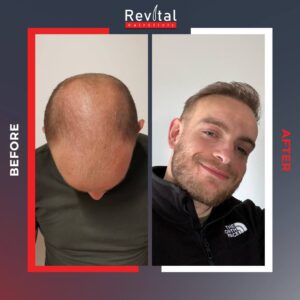
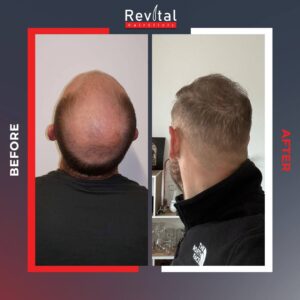
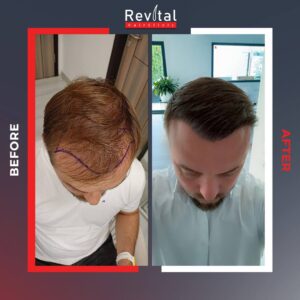
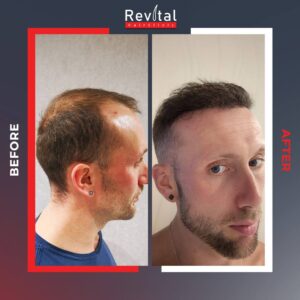



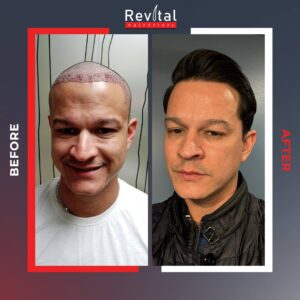

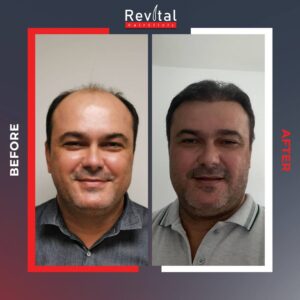
Leave a Reply